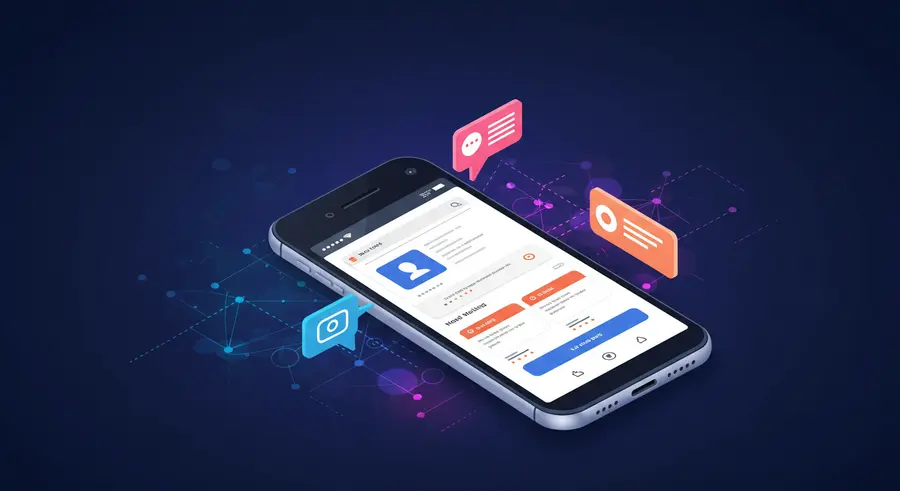Appearance

Welcome, tech innovators! 👋 Today, we're diving deep into a transformative technology that's reshaping the digital landscape: Progressive Web Apps (PWAs). If you've ever wished your favorite website could act more like a native app – faster, installable, and even offline-capable – then you're already familiar with the magic of PWAs.
What Exactly Are Progressive Web Apps? 🤔
At their core, PWAs are web applications that leverage modern web technologies to deliver an experience akin to native mobile applications. Think of them as the best of both worlds: they offer the broad reach and accessibility of a website combined with the rich features and engaging user experience of a platform-specific app.
They are designed to be:
- Progressive: They work for every user, regardless of browser choice, because they're built with progressive enhancement as a core tenet.
- Responsive: They fit any form factor, be it desktop, mobile, tablet, or whatever comes next.
- Connectivity independent: Enhanced with service workers, they can work offline or on low-quality networks.
- App-like: They feel like native apps to the user, with app-style interactions and navigation.
- Fresh: Always up-to-date thanks to the service worker update process.
- Safe: Served via HTTPS to prevent snooping and ensure content hasn't been tampered with.
- Discoverable: Identifiable as "applications" thanks to W3C manifests and service worker registration, allowing search engines to find them.
- Re-engageable: Support push notifications to keep users engaged.
- Installable: Allow users to "keep" apps they find most useful on their home screen without the hassle of an app store.
- Linkable: Easily shared via a URL, meaning no complex installation.
Why the PWA Revolution? The Benefits Are Clear! ✨
PWAs are not just a trend; they're a paradigm shift in web development, offering significant advantages for both users and businesses.
For Users:
- Enhanced User Experience: Faster load times, smooth animations, and responsive designs make for a delightful browsing experience.
- Offline Access: Imagine reading an article or browsing a product catalog even when your internet connection drops! Service Workers cache essential resources, making this a reality.
- Installability: Add your favorite websites directly to your home screen, just like a native app, without visiting an app store.
- Push Notifications: Stay updated with timely and relevant information, much like native apps.
- Reduced Data Usage: Thanks to efficient caching, PWAs often consume less data than traditional websites.
For Businesses & Developers:
- Wider Reach & Accessibility: Accessible via a URL, PWAs bypass app store restrictions and reach users across all devices and platforms from a single codebase.
- Lower Development & Maintenance Costs: A single codebase for web and "app" reduces development efforts and ongoing maintenance compared to separate native iOS and Android apps.
- Increased Engagement & Conversions: Faster loading times, push notifications, and an app-like experience lead to higher user engagement and conversion rates.
- Improved SEO: PWAs are essentially websites, making them discoverable by search engines, driving more organic traffic.
- Automatic Updates: Users always have the latest version without manual updates.
How Do They Work? The Tech Behind the Magic 🛠️
The core technologies enabling PWAs are:
- Service Workers: These are JavaScript files that run in the background, separate from the web page. They act as a proxy between the browser and the network, enabling powerful features like offline support, caching strategies, and push notifications.
- Web App Manifest: A JSON file that provides information about the application (like its name, icon, start URL, display mode, etc.) to the browser. This allows the PWA to be installed on the user's home screen and appear like a native app.
- HTTPS: Security is paramount. PWAs must be served over HTTPS to ensure that the content hasn't been tampered with and to protect user data.
Real-World Success Stories 🌟
Many prominent companies have successfully adopted PWAs, showcasing their power:
- Twitter Lite: A prime example, significantly improving engagement and reducing data usage.
- Pinterest: Saw a 60% increase in core engagements and a 40% increase in user-generated ad revenue.
- Starbucks: Their PWA allows customers to browse the menu, customize orders, and add items to their cart offline.
- Spotify: Offers an app-like experience directly in the browser, making music accessible anywhere.
These examples highlight how PWAs can drive significant improvements in user experience and business metrics.
Best Practices for Building Stellar PWAs 🚀
To ensure your PWA shines, consider these best practices:
- Responsive Design: Ensure your app looks and functions perfectly on all screen sizes.
- Performance Optimization: Optimize images, code, and network requests for lightning-fast loading.
- Offline First: Design your app to prioritize offline functionality using service workers.
- Accessibility: Make sure your PWA is usable by everyone, including those with disabilities.
- Progressive Enhancement: Start with a solid, basic experience and then layer on advanced PWA features for capable browsers.
- Implement Push Notifications Wisely: Use them to provide real value, not just spam.
Explore More on PWAs!
Want to dive deeper into Progressive Web Apps? Check out our catalogue page on the topic: The Power of Progressive Web Apps (PWAs)
PWAs are not just an alternative to native apps; they represent an evolution of the web itself, offering a seamless, engaging, and highly performant experience. Embrace the PWA revolution and unlock new possibilities for your web presence!
Happy coding! 💻✨